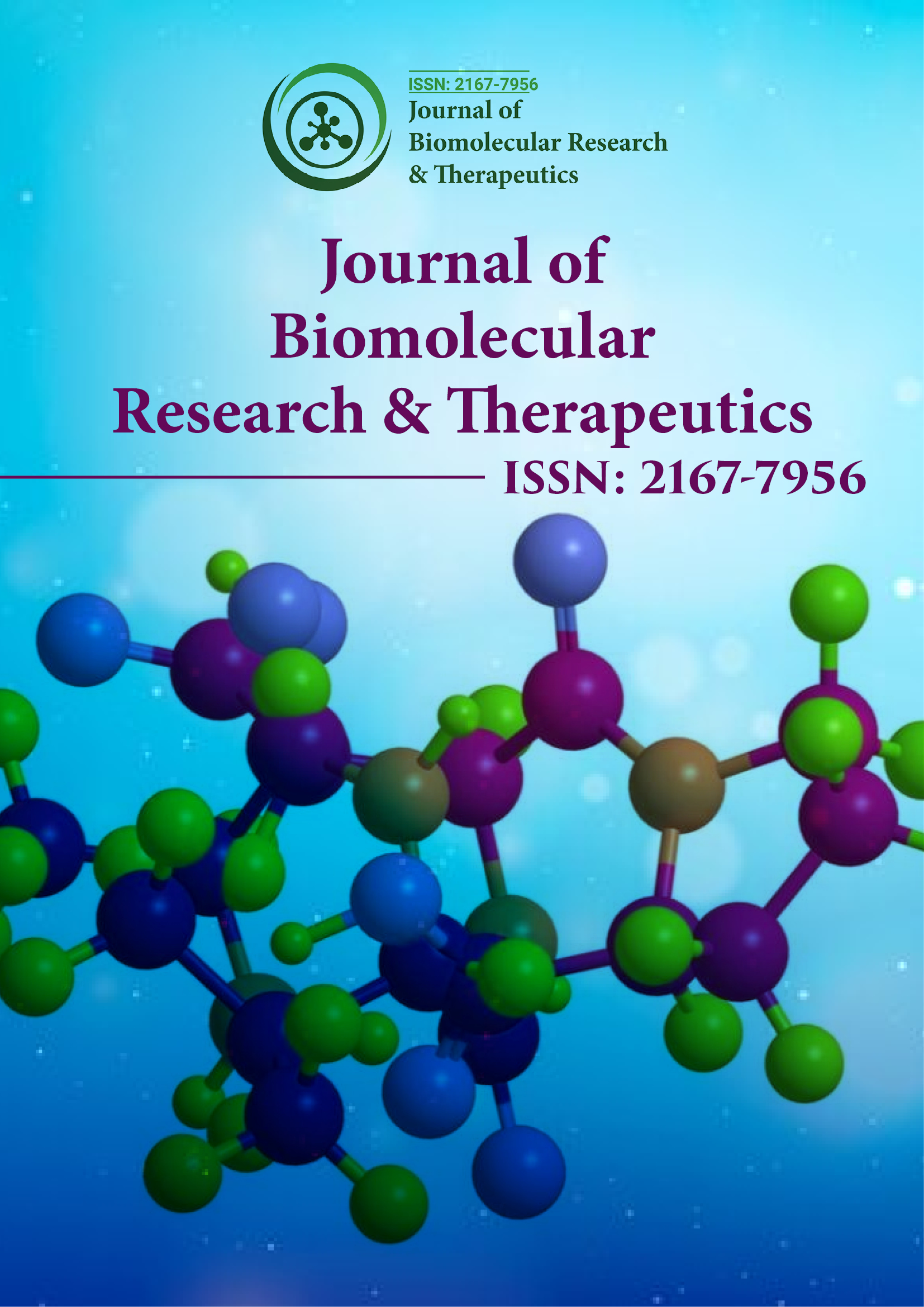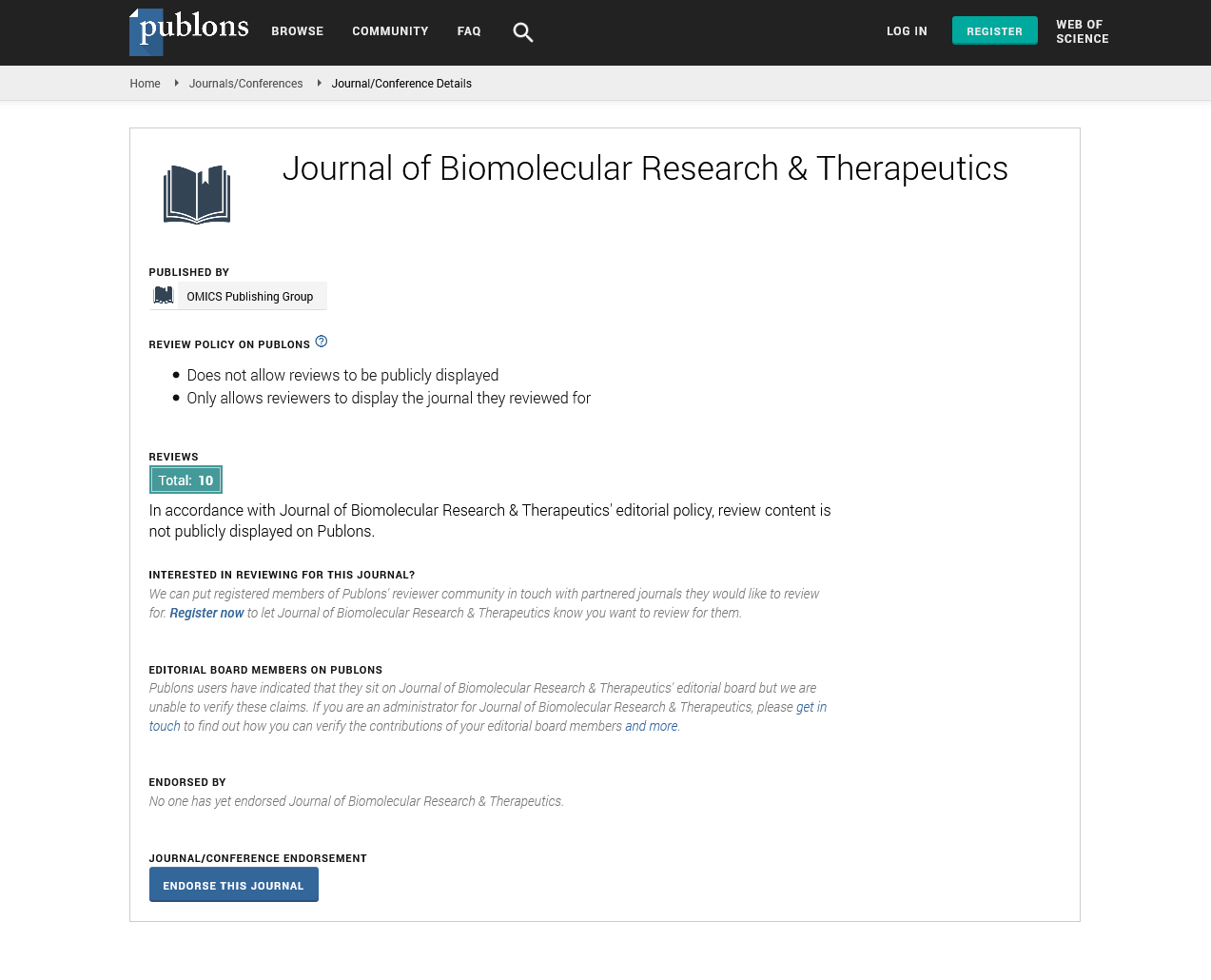Indexed In
- Open J Gate
- Genamics JournalSeek
- ResearchBible
- Electronic Journals Library
- RefSeek
- Hamdard University
- EBSCO A-Z
- OCLC- WorldCat
- SWB online catalog
- Virtual Library of Biology (vifabio)
- Publons
- Euro Pub
- Google Scholar
Useful Links
Share This Page
Journal Flyer

Open Access Journals
- Agri and Aquaculture
- Biochemistry
- Bioinformatics & Systems Biology
- Business & Management
- Chemistry
- Clinical Sciences
- Engineering
- Food & Nutrition
- General Science
- Genetics & Molecular Biology
- Immunology & Microbiology
- Medical Sciences
- Neuroscience & Psychology
- Nursing & Health Care
- Pharmaceutical Sciences
Commentary - (2022) Volume 11, Issue 3
Biomolecular Engineering in Nano Technology
David Gutenberg*Received: 04-Mar-2022, Manuscript No. BOM-22-16259; Editor assigned: 07-Mar-2022, Pre QC No. BOM-22-16259(PQ); Reviewed: 21-Mar-2022, QC No. BOM-22-16259; Revised: 28-Mar-2022, Manuscript No. BOM-22-16259(R); Published: 04-Apr-2022, DOI: 10.35248/2167-7956.22.11.205
Description
Biomolecular engineering describes biomolecules such as peptides, proteins, nucleic acids, and lipids with their structures, functions, and properties, and their applicability in fields such as the development of new biomaterials, biosensing, bioimaging, and clinical diagnosis. Can be used to manipulate in the context of treatment [1,2]. Nanotechnology can also be used to design and adjust the size, shape, properties, and functionality of nanomaterials. Therefore, there is an important overlap between nanotechnology and biomolecular engineering to address the structure and behavior of materials below the nanometer scale [2,3]. Therefore, biomolecular engineering combined with nanotechnology is expected to open up new fields of nanobio or bioanotechnology and contribute to the development of new nanobiomaterials, nanobiodevices, and nanobiosystems. In this review, treatment, diagnosis, biosensing, bioanalysis, biocatalyst. In addition, this review focuses on five areas of recent advances in biomolecular engineering like nucleic acid engineering, genetic engineering, protein engineering, chemical and enzymatic. Binding technology, and linker engineering.
Precisely designed Nano biomaterials, nanobiodevices, and nanobiosystems may emerge as next-generation platforms for bioelectronics, biosensors, biocatalysts, molecular imaging modalities, biological actuators, and biomedical applications. It is expected Nanotechnology is the advent and usage of substances, gadgets, and structures through controlling depend at the nanometer scale, and it's far the important thing generation of the twenty-first century. The cap potential to take advantage of the structures, capabilities and techniques of organic molecules, complexes and Nano systems to supply novel purposeful nanostructured organic substances has created the developing fields of Nano biotechnology and bio nanotechnology [4,5]. Nanobiotechnology is used in terms of the methods where nanotechnology is used to create substances, gadgets and structures for reading organic structures and growing new organic assay, diagnostic, healing, records garage and computing structures, amongst others. These structures use nanotechnology to increase the dreams of organic fields. Some nanobiotechnologies scale from the pinnacle down, consisting of microfluidics to nanofluidic biochips.
On the alternative hand, bionanotechnology refers back to the methods where in biotechnology is used to enhance current or create new nanotechnologies. Organic structures paintings and the programs of organic molecules and structures to nanotechnology. DNA and RNA nanotechnologies, the usage of the base-pairing and molecular self-meeting homes of nucleic acids to create beneficial substances, consisting of DNA origami, DNA nanomachines, DNA scaffolds for electronics, photonics and protein arrays, and DNA and RNA aptamers, ribozymes and riboswitches, are critical examples of bionanotechnology. Another critical region of studies taking benefit of the peptides, proteins and lipids to generate well-described 3-D structures, purposeful protein complexes, Nano films and different nanostructures, consisting of micelles, opposite micelles and liposomes, which might be used as novel processes for the largescale manufacturing of programmable nanomaterial’s . The software of carbohydrate polymers mixed with nanotechnology in tissue engineering and medicinal drug also are capacity studies fields for the improvement of novel biomaterials for biosensing, bioimaging, diagnostic and drug-transport structures.
With both nanobiotechnology or bionanotechnology, organic molecules are imperative constructing blocks for fabricating purposeful nanomaterials, nanodevices and nanosystems. However, from the standpoint of making use of organic substances to nanotechnology, organic substances discovered in nature usually have enough capabilities and homes. Recent advances in biomolecular engineering, consisting of genetic engineering, DNA and RNA engineering, protein engineering, site-particular chemical and enzymatic conjugation technologies, self-meeting generation Thus, it's far viable to create engineered organic substances.
REFERENCES
- Hirakawa H, Haga T, Nagamune T. Artificial protein complexes for biocatalysis. Topics in Catalysis. 2012; 55(16):1124-1137.
- Mullaney JA, Rehm BH. Design of a single-chain multi-enzyme fusion protein establishing the polyhydroxybutyrate biosynthesis pathway. Journal of biotechnol. 2010; 147(1):31-36.
- Care A, Bergquist PL, Sunna A. Solid-binding peptides: smart tools for nanobiotechnology. Trends in biotechnology. 2015; 33(5):259-268.
- Verma ML, Puri M, Barrow CJ. Recent trends in nanomaterials immobilised enzymes for biofuel production. Critical reviews in biotechnology. 2016; 36(1):108-119.
- Cardinale D, Carette N, Michon T. Virus scaffolds as enzyme nano-carriers. Trends in biotechnology. 2012; 30(7):369-376.
Citation: Gutenberg D (2022) Biomolecular Engineering in Nano Technology. J Biol Res Ther. 11:205.
Copyright: © 2022 Gutenberg D. This is an open access article distributed under the terms of the Creative Commons Attribution License, which permits unrestricted use, distribution, and reproduction in any medium, provided the original author and source are credited.

